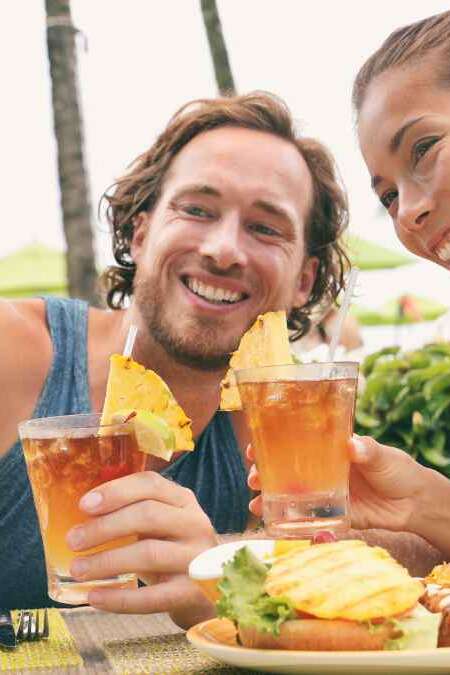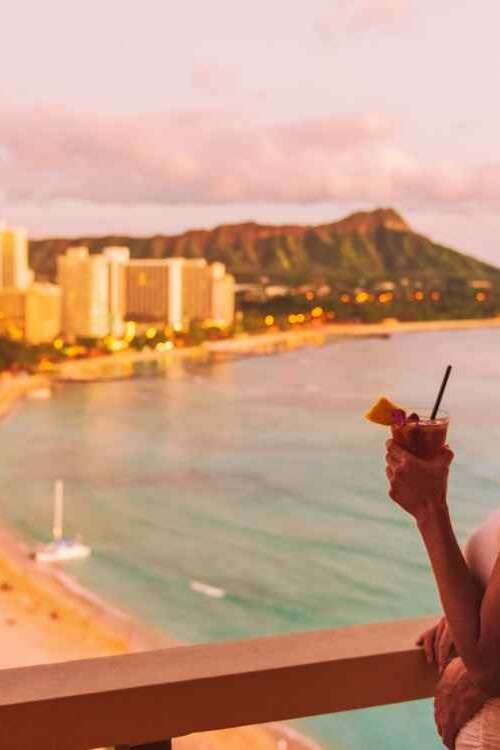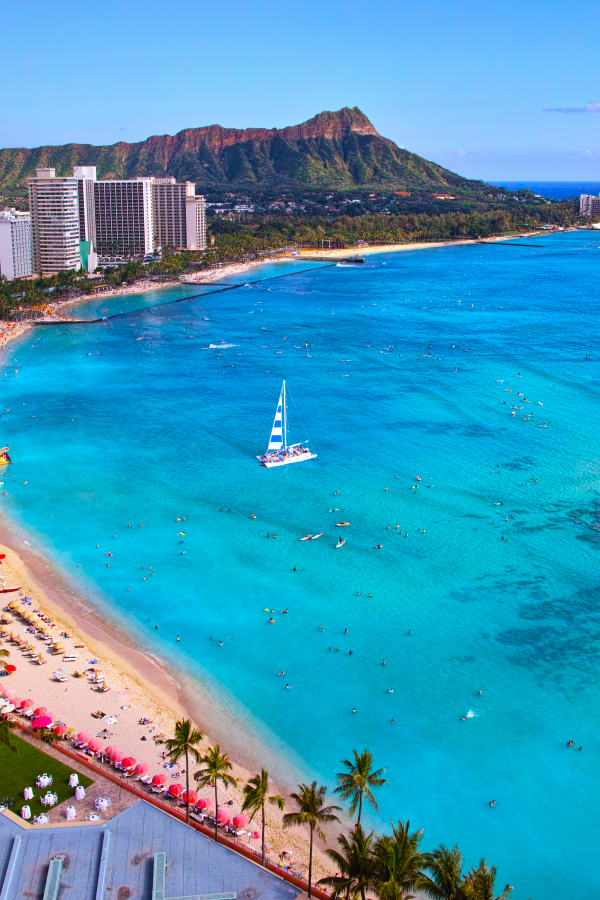Honolulu, the vibrant epicenter of Hawaii, is a city that effortlessly blends tropical paradise with the hustle and bustle of modern urban life. Known for its iconic crescent beaches, impressive skyline, and rich cultural history, Honolulu offers a unique, multifaceted experience that captivates visitors from all over the globe. In this article, we’ll take you on a journey exploring the city’s best attractions, hidden gems, and the unique charm that makes Honolulu a must-visit destination.
Highlights
- Honolulu offers a range of outdoor activities to suit every preference.
- From the somber Pearl Harbor Memorial to the adventurous Diamond Head, Honolulu is a city where history comes alive, offering a deeper understanding of its past.
- Honolulu’s culinary scene reflects a beautiful blend of Hawaiian, Asian, and Polynesian flavors, providing a unique gastronomic experience.
- The city hosts a variety of events and festivals like the Lantern Floating Festival, allowing visitors to immerse themselves in the vibrant local culture and traditions.
- Honolulu seamlessly combines the laid-back tropical paradise with the bustling energy of a modern city, creating a dynamic and diverse atmosphere.
History
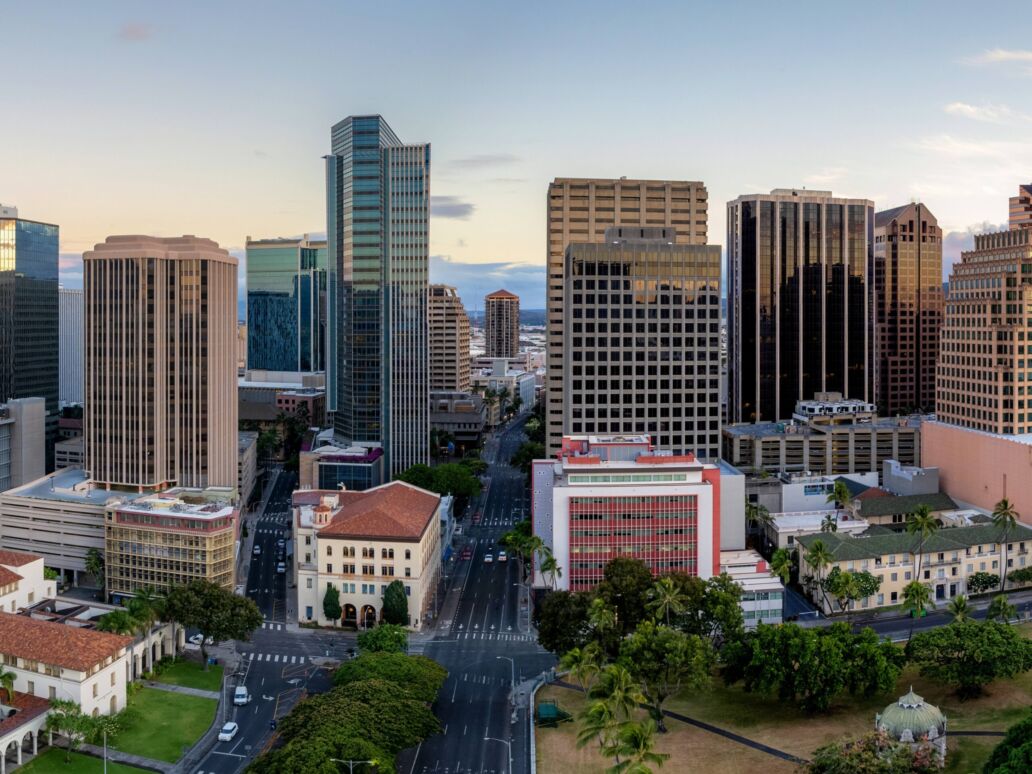
Ancient Beginnings
Around 2,000 years ago, the allure of Honolulu captivated Polynesian voyagers who, drawn by its protected bay, bestowed upon it the fitting name “sheltered harbor.” Picture a serene landscape where ancient Hawaiians, deeply connected to their natural surroundings, cultivated taro patches along the fertile shores. In these ancient times, Honolulu’s harbor was already a haven, nurturing a community rooted in the symbiosis of nature and human ingenuity.
Kingdom on the Rise
In the transformative year of 1810, King Kamehameha I orchestrated the unification of the Hawaiian Islands, strategically designating Honolulu as the esteemed royal capital. Envision the grandeur of this era with magnificent luaus, where the air was filled with the rhythmic beats of hula, and the echoes of conch shells reverberated across the landscapes, signaling the weighty pronouncements of royalty. As the 19th century unfolded, specifically from 1820 onwards, Honolulu flourished as a bustling hub for whalers and sandalwood traders, where the aroma of exotic wood mingled with salty air, sailors bartered in waterfront taverns, and tattooed chiefs negotiated with foreign merchants. This period not only witnessed the convergence of global influences but also marked the city’s emergence as a vital player in the Pacific trade network.
Foreign Influences
During the transformative years between 1816 and 1849, Honolulu found itself at the crossroads of global influences as Russians, British, and French briefly occupied its harbor, contributing to a rich tapestry of architectural diversity and cultural fusion. The remnants of Russian Fort Elizabeth, are a testament to a bygone era when Russian influence left a lasting imprint on Honolulu’s landscape. The sophistication of British-inspired architecture at Queen Emma’s Summer Palace is where sipping tea in regal surroundings transports you to an era when the British presence made its mark on Hawaiian royalty. Honolulu’s brief encounters with these foreign powers left an indelible mark on its cultural landscape, creating a city that beautifully embraces the mosaic of influences, each contributing to the unique and diverse character that defines modern-day Honolulu.
Modern Transformation
In 1850, Kamehameha III relocated the permanent capital from Lahaina to Honolulu, initiating its transformation into a modern capital. Despite the turbulence of the late 19th and early 20th centuries, Honolulu stood as the capital, largest city, and main airport and seaport of the Hawaiian Islands. The overthrow of the Hawaiian monarchy in 1893 paved the way for American annexation in 1898, marking a turbulent yet defining period in Hawaii’s complex history.
The 20th Century
This era saw the city evolve, embracing the changing tides of commerce and the allure of its tropical paradise. In the 1900s, Waikiki, once a cherished playground reserved for Hawaiian royalty, underwent a metamorphosis, becoming a vibrant beach paradise that attracted visitors from around the world. The serene waters that once mirrored the activities of ancient Hawaiians became a playground for sun-seekers and surf enthusiasts. Luxury hotels graced the shores, each vying to offer guests an unparalleled experience in the lap of tropical splendor. These architectural marvels not only redefined Honolulu’s skyline but also set the stage for the city’s emergence as a global tourist hotspot.
The Pivotal Year
The year 1941 stands as an indelible chapter in Honolulu’s history, marking a turning point that echoed far beyond the serene shores. Pearl Harbor, situated just outside Honolulu, bore witness to a tragic and devastating attack by Japan, catapulting the United States into the tumultuous throes of World War II. The events of December 7, 1941, forever changed the course of history, leaving an enduring impact on the collective memory of a nation.
Honolulu Today
The dynamic presence of Honolulu is where the city’s heartbeat is a vibrant blend of ancient traditions and contemporary marvels. As you explore the cityscape, witness the modern skyscrapers that pierce the skyline, a testament to Honolulu’s evolution into a bustling urban center. On the shores of Waikiki, surfers gracefully carve through the waves, their movements echoing the age-old tradition of outrigger canoes. This juxtaposition of ancient watercraft and contemporary surfing culture exemplifies the city’s ability to seamlessly integrate tradition into the fabric of everyday life. Honolulu today is a living canvas where the past and present coexist. It’s a city that invites exploration, beckoning visitors to witness the captivating dance of tradition and innovation that defines the cultural landscape of present-day Honolulu.
Things to Do
Visit the Top Tourist Attractions
Pearl Harbor
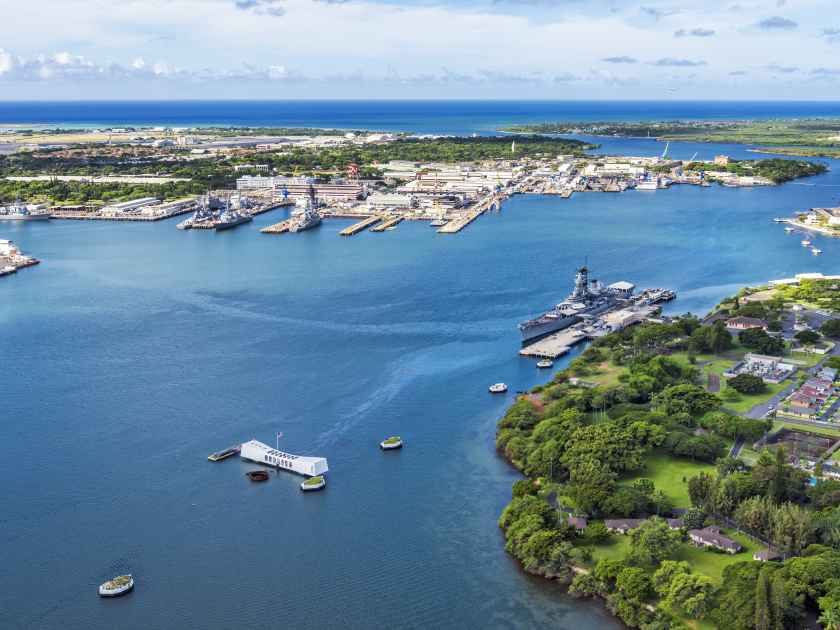
As one of the most significant sites in American history, Pearl Harbor is a must-visit destination. Here, you can explore the USS Arizona Memorial, the Battleship Missouri, the USS Bowfin Submarine, the Pacific Aviation Museum, and numerous exhibits that present an insightful narrative of World War II and the infamous attack that drew the United States into it. Pearl Harbor serves as a living testament to the importance of preserving history, fostering remembrance, and educating future generations. These attractions collectively emphasize the gravity of historical events, encouraging visitors to appreciate the sacrifices made for the freedoms we cherish today.
See More; Pearl Harbor Tours and Tickets
Diamond Head
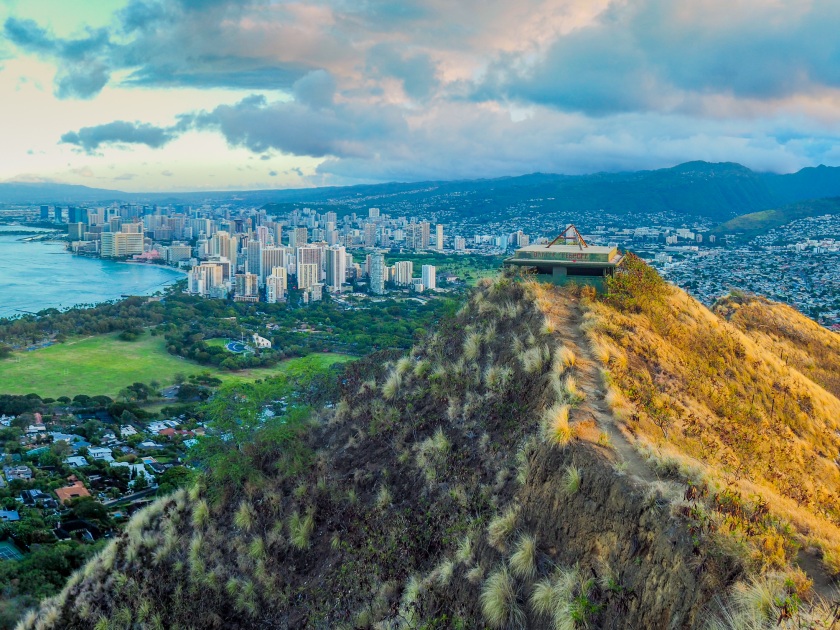
Next, head over to Diamond Head, one of Honolulu’s most distinctive landmarks. This ancient volcanic crater offers a hiking trail that climbs to the summit, presenting breathtaking, panoramic views of the city and ocean. Uncover the tales of its past, including its role in coastal defense and its transformation into a symbol of Honolulu’s resilience.
Waikiki Beach
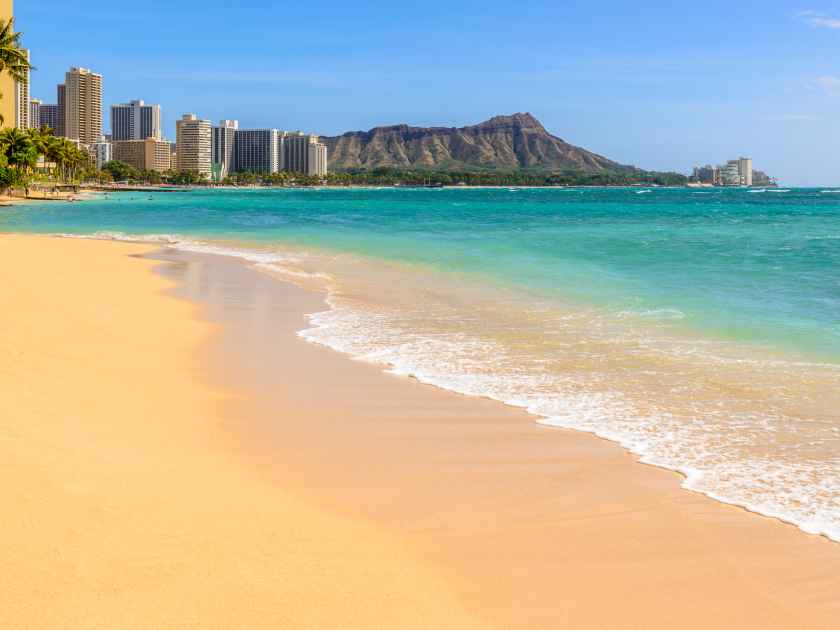
No trip to Honolulu would be complete without basking in the sun at the world-renowned Waikiki Beach. As a world-class resort destination, Waikiki captivates with its vibrant energy, blending relaxation and recreation seamlessly. Dive into a plethora of water activities, from thrilling surfing lessons to serene paddleboarding, catering to both adventure seekers and those seeking a leisurely beach day. Explore the well-maintained beaches equipped with rental services, ensuring a hassle-free experience for beachgoers.
Participate in Outdoor Activities
Trail Hikes
Manoa Falls Trail
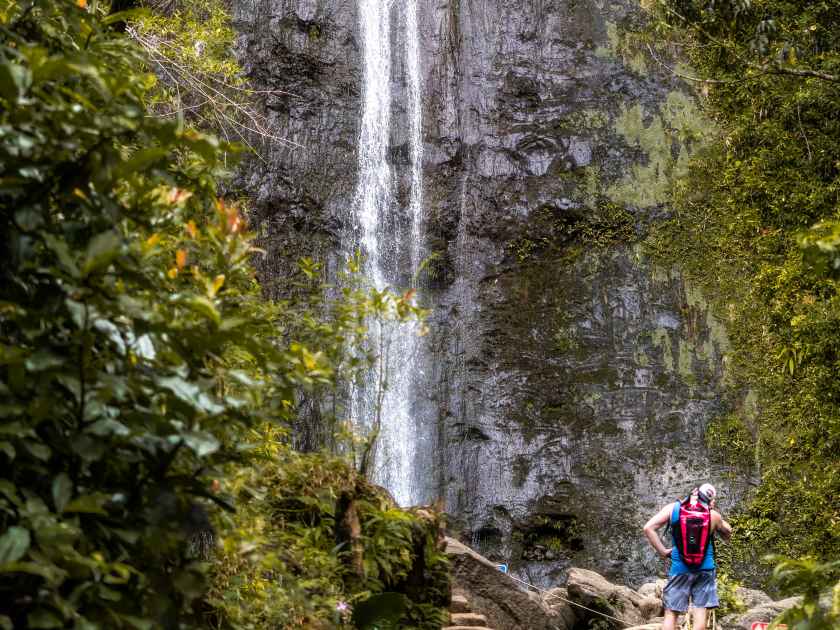
In the lush Manoa Valley, this trail leads hikers through a tropical rainforest to the enchanting Manoa Falls. Experience the sights and sounds of a vibrant ecosystem, with the 150-foot waterfall serving as the ultimate reward for your trek. Surrounded by emerald greenery, the trail provides a serene escape from the urban hustle, making it an ideal adventure for nature enthusiasts.
Makapuu Lighthouse Trail
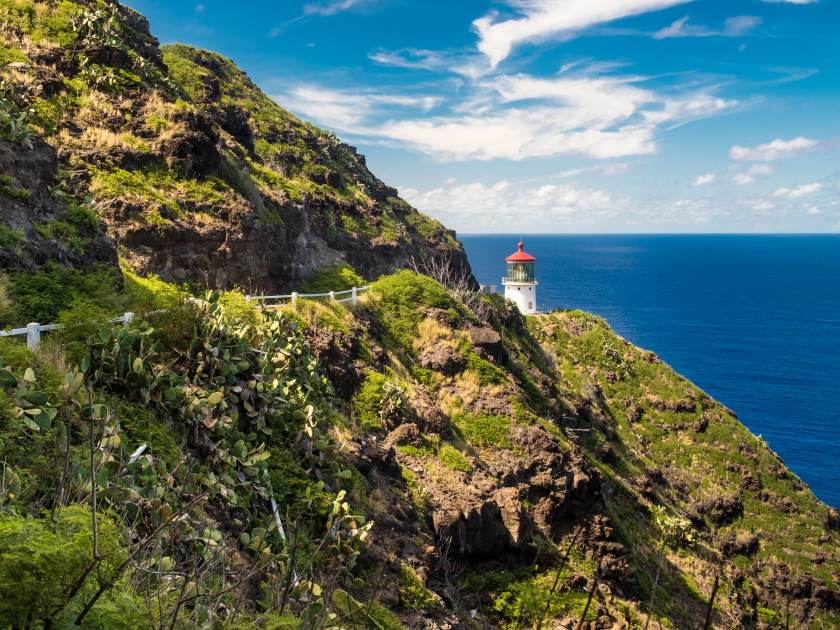
Along the southeastern shore, the Makapuu Lighthouse Trail offers a captivating journey with panoramic views of the Pacific Ocean. The well-maintained trail is a relatively easy hike, culminating in stunning vistas of the offshore islands and the iconic Makapuu Lighthouse. This trail’s allure is heightened during the winter months when humpback whales often make appearances in the waters below.
Water Adventures
Snorkeling and Scuba Diving Spots
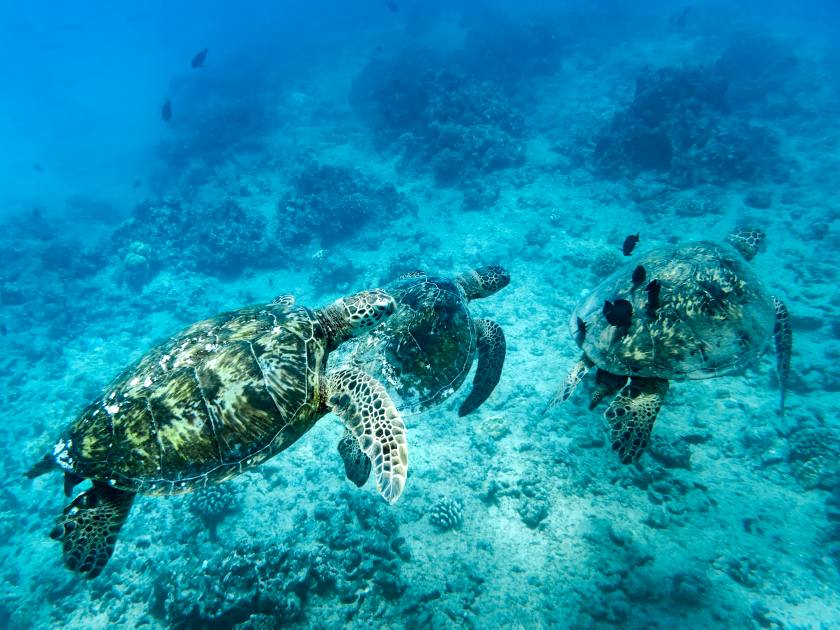
Explore the vibrant underwater world at Hanauma Bay, a renowned snorkeling destination teeming with colorful coral and diverse marine life. For scuba enthusiasts, the underwater lava formations at Electric Beach provide an immersive diving experience with opportunities to encounter sea turtles and rays. Both spots offer rental facilities and guided tours for all skill levels, ensuring a safe and enjoyable aquatic adventure.
Surfing Lessons
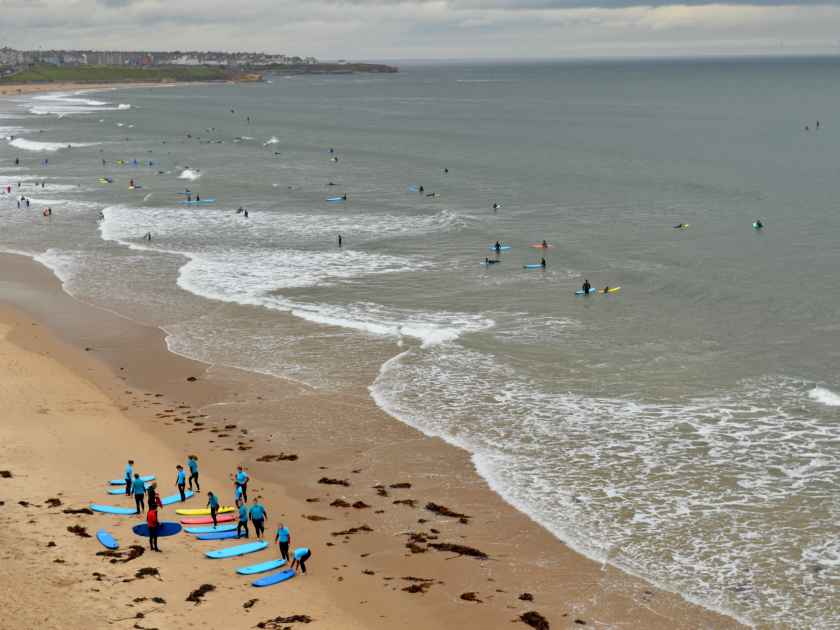
Honolulu’s legendary surf culture beckons beginners to catch their first wave with lessons along the gentle breaks of Waikiki Beach. Professional instructors provide hands-on guidance, making the learning process both educational and thrilling. Feel the rush of riding the Pacific waves, and gain confidence in this iconic Hawaiian pastime.
Sunset Cruises
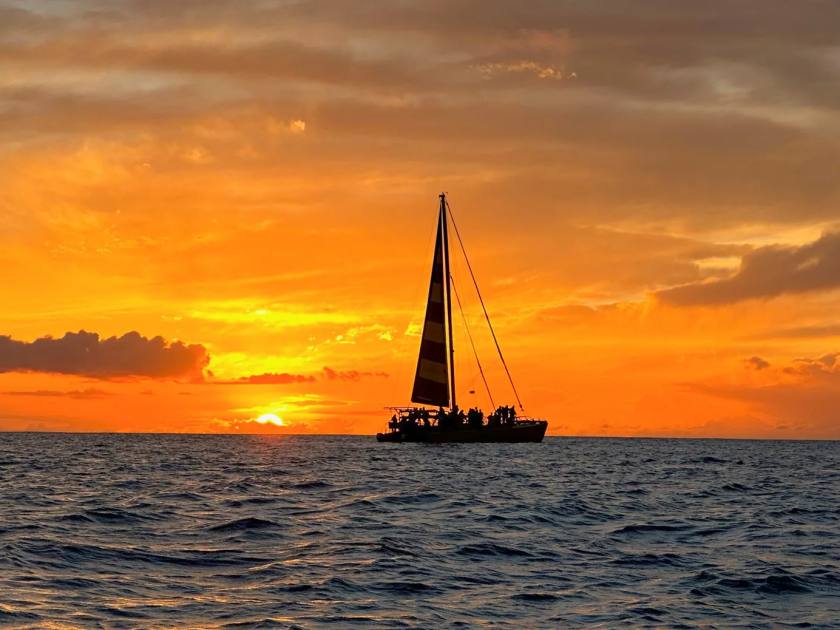
Set sail on a sunset cruise along the Waikiki coastline for a romantic and picturesque experience. Bask in the warm hues of the setting sun, casting its glow over Diamond Head and the city skyline. Various cruise options, from catamarans to luxury vessels, offer a serene way to end the day while enjoying the beauty of Honolulu’s coastal vistas.
Indulge in Honolulu’s Culinary Scene
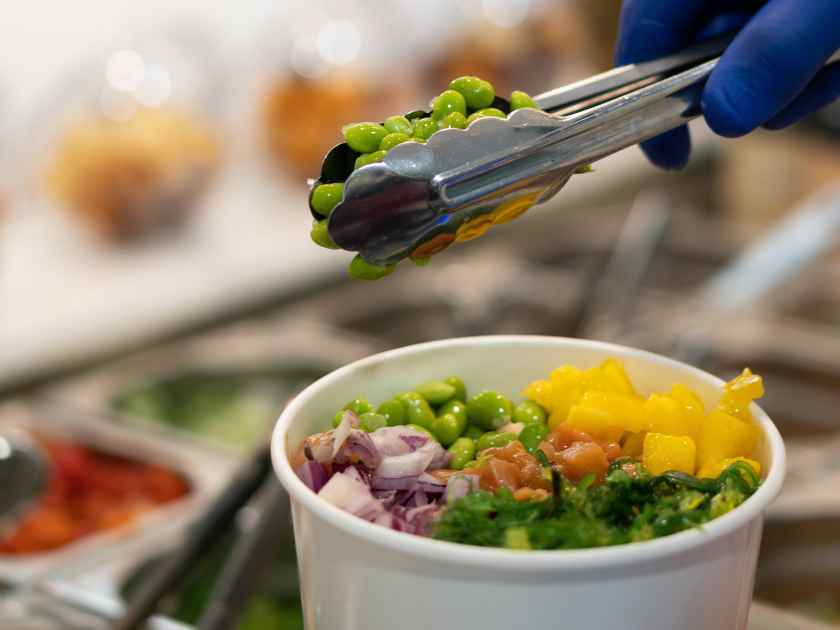
Honolulu’s food scene is a diverse blend of local specialties and upscale dining, influenced by the city’s multicultural heritage. From mouthwatering local specialties like poke and kalua pork to upscale dining at world-class restaurants, there’s something to satisfy every palate. It offers a variety of traditional Hawaiian cuisine, including ‘luau’ feasts and fresh seafood at beachside eateries.
The city also offers a wide variety of international cuisine, including Japanese sushi, Korean barbecue, and Italian pasta. Local institutions like Helena’s Hawaiian Food and Da Ono Hawaiian Food offer authentic comfort food like laulau, haupia, and contemporary poke bowls featuring locally sourced fish. Honolulu’s fusion cuisine draws from Polynesian, Asian, and Western influences, with renowned establishments like Roy’s Waikiki and MW Restaurant, combining traditional flavors with contemporary presentations, to offer dishes that are both visually stunning and palate-pleasing. Honolulu’s vibrant food culture invites enthusiasts to explore a culinary journey that encapsulates the city’s cultural heritage and creative spirit.
See More: 10 Best Restaurants in Honolulu
Join Local Events and Festivals
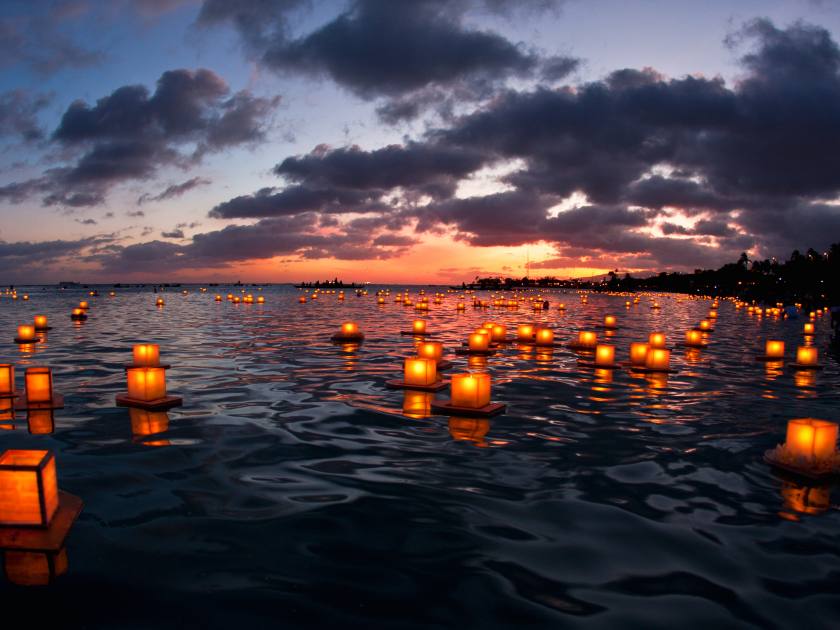
In Honolulu, the local events and festivals weave a vibrant tapestry of cultural celebration throughout the year. The Honolulu Festival stands as an annual highlight, bringing together the diverse communities of the Pacific Rim to showcase their arts, traditions, and performances. The King Kamehameha Day Parade pays homage to Hawaii’s history, commemorating the great King Kamehameha I with a majestic procession that parades through the heart of Honolulu. The Hawaii International Film Festival adds a cinematic flair to the city, offering a platform for global and local filmmakers to present their creative works. Additionally, the Lantern Floating Festival, a deeply meaningful event, brings the community together on Memorial Day to float lanterns in a symbolic gesture of remembrance and hope.
Tips for Visiting
- Plan around the weather: While Honolulu has a pleasant climate year-round, remember that the rainy season typically runs from November to March. Planning your visit outside these months can help ensure perfect beach weather.
- Don’t just stick to the city: Oahu, the island where Honolulu is located, has much more to offer. Consider renting a car for a day to explore the North Shore, famous for its surfing, and the Windward Coast, known for its stunning natural beauty.
- Try local cuisine: Don’t miss the chance to try local delicacies like poke, loco moco, and shave ice. Farmer’s markets and food trucks are great places to sample a variety of local foods.
- Respect the environment: The Hawaiian Islands are home to delicate ecosystems and sacred cultural sites. Follow the principles of ‘Leave No Trace’ — take only photographs, leave only footprints.
- Learn some Hawaiian phrases: While English is the primary language spoken in Honolulu, learning a few basic Hawaiian phrases like “Aloha” (Hello/Goodbye) and “Mahalo” (Thank You) can enrich your experience and allow you to connect more with locals.
- Sun protection is a must: Honolulu’s tropical location means the sun can be intense. Always wear high-SPF and reef-safe sunscreen, a hat, and sunglasses when you’re outside, especially between 10 am and 4 pm.
- Pack your beach gear: Don’t forget your swimsuit, beach towel, and snorkel gear — you’ll need them for Honolulu’s fantastic beaches. If you don’t want to pack these items, they can easily be rented or bought once you arrive.
Best Time to Visit
Deciding on the best time to visit Honolulu largely depends on personal preferences. Generally, the city enjoys a pleasant, tropical climate all year round. However, if you aim to avoid heavy tourist crowds while still enjoying good weather, the months of April, May, September, and October could be ideal. These periods are considered shoulder seasons – the beach isn’t as crowded but the weather is still fantastic, making your trip much more enjoyable. For surfers chasing big waves, the winter months (November to January) are the best time to visit the North Shore. Keep in mind, though, that this is also the peak tourism season with higher accommodation prices and more crowded attractions.
Frequently Asked Questions (FAQs)
No, Honolulu is a city located on the island of Oahu. Oahu is the third-largest of the Hawaiian Islands and is home to Honolulu, making the city one of the major hubs on the island. Honolulu is the capital of Hawaii and sits on the southeastern shore of Oahu.
Honolulu is renowned for its cultural richness, historical significance, and stunning natural beauty. As the capital city of Hawaii, it houses important institutions, and historical sites like Pearl Harbor, and offers access to iconic attractions such as Waikiki Beach, making it a cultural, historical, and tourist hub in the Pacific.
Honolulu offers unique cultural experiences such as traditional Hawaiian Luaus, Hula dancing, and the opportunity to learn about Hawaii’s royal history at Iolani Palace.
Honolulu can be relatively expensive, especially in terms of accommodation and dining. However, with careful planning, visitors can find a range of options to fit different budgets. Exploring alternative accommodations, and local eateries, and taking advantage of free or low-cost attractions can help manage costs.
Yes, Honolulu is a great place for family vacations with its family-friendly beaches, attractions like the Honolulu Zoo & Waikiki Aquarium, and plenty of outdoor activities that children will enjoy.
How to Get There
By Car
If you’re already on the island of Oahu, getting to Honolulu by car is straightforward. The city is well-connected to other parts of the island by Interstate H-1, Hawaii’s busiest highway. If you’re heading from the North Shore, you can take Highway 99 (Kamehameha Highway) southward, which will lead you directly into the city. Remember to plan your journey during non-peak hours to avoid Honolulu’s notorious traffic!
By Bus
TheBus, Honolulu’s public transportation service, operates numerous routes that go into the city from various parts of Oahu. For example, if you’re coming from Waikiki, you can take Route 2 or 13. From the airport, Route 19 will take you downtown. A one-way fare is currently $2.75 for adults, with discounts available for seniors and children. Be sure to check TheBus’s official website for the most recent schedules and fare information.
Honolulu is Waiting to Welcome You with a Warm, Sunny Embrace!
Now is the time to turn your curiosity into a memorable adventure. Plan your itinerary, discover hidden gems, and envision yourself strolling through the historical sites. Visit once, and you’ll leave a piece of your heart here, forever calling you back.


